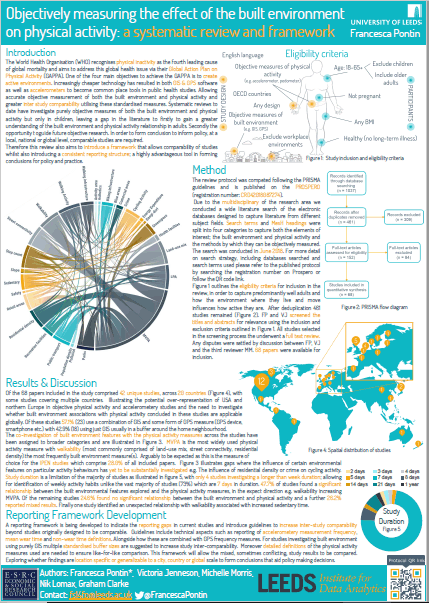ISBNPA 2019
The International Society for Behavioural Nutrition and Physical Activity Annual Meeting
In June 2019 I attended the International Society for Behavioural Nutrition and Physical Activity’s Annual meeting in Prague. As a leading conference for both behavioural nutrition and physical activity research I enjoyed being able to learn what is going on at the forefront of the physical activity field. Whilst also indulging in some nutritional research, which I haven't been immersed in since my switch to data, geography and physical activity from food science and nutrition. It was particularly beneficial to be able to speak to and hear about the research being conducted by physical activity researchers as within LIDA I am the only one focused specifically on this field.
Highlights of the conference include participating in a big data workshop preceding the conference (outlined below) and presenting my poster on my systematic literature review. I was particualry encouraged by the excitment arround the poster; which is defineitly motivation to get the review finished and submitted for publication ASAP.
It was also great to catch-up with the other ECR researchers I have previously met at ISPAH and making new connections. Especially having a dance at the conference dinner/party in an 800-year-old convent, which will not be forgotten in a hurry.



